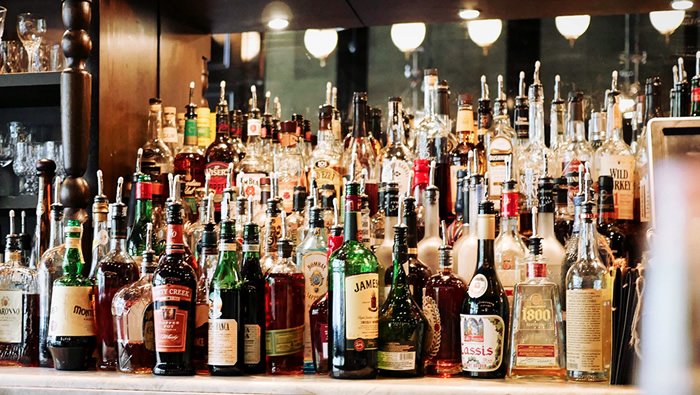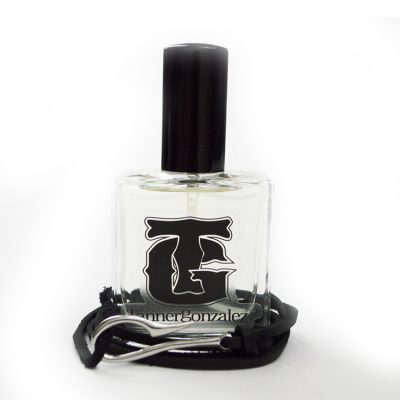The term “spirits” can refer to a lot of things: the stuff you’re not supposed to lose during hard times. Something cheerleaders are professionally obsessed with. The beings you negotiate with after you’ve accidentally moved into a haunted house. And, oh yes, bottles of power-packing alcohol.
But what are alcoholic spirits, exactly? Basically they’re the biggest, brawniest older brother of the alcohol family. All alcoholic beverages are made by fermenting some form of sugary brew into ethanol and CO2. Because yeast can only ferment so much before alcohol levels become toxic to them, we have to distill (or physically separate out the water) to get higher alcohol concentrations. And that’s why “spirits” are differentiated in two ways: they’re distilled, and they have higher average ABVs, from around 20% to as high as 80 or 90% ABV (most spirits fall somewhere much closer to the middle).
Of course, the term “spirit” (aka liquor) doesn’t refer to everything you see in a liquor store besides wine and beer. For instance, you may also see bottles with names like Fernet Branca, Amaretto, Peach Schnapps, or Peychaud’s Bitters. These are all part of the colorful, intoxicating extended spirits family, but they’re not quite spirits (because they’ve had things like sugar, herbs, and spices added to them and tend to have lower ABVs).
So how can you spot a spirit/liquor? These days, thanks to a glutted market, it’s not quite as obvious as a jug with a few X’s on it. There are craft distilleries cranking out newer, smaller brands, flavorings that make hard liquor taste like anything from jalapeño to marshmallow, and even some seriously unusual packaging that takes brand recognition to a freaky new level.
But thanks to the Alcohol and Tobacco Tax and Trade Bureau, all spirits bottles have to be labelled with some pretty specific information: the brand name; the kind of spirit in the bottle (e.g. vodka, gin, tequila, rum, and whisky, though you may also see things like moonshine, mezcal, pisco, and cachaça); any further required details regarding the spirit, for instance the age of the whiskey if it’s under four years; the alcohol by volume (or ABV), which must be written as a percentage but will often also be labelled as “Proof”; the country of origin as well as address and name of the importer or bottler; and, last but not least, a big fat government warning about the dangers of alcohol.
There’s a lot more that differentiates one spirit from another, but this generally—plus centuries of distilling history—is what differentiate spirits in the alcohol world.
Spirits are the highest ABV products of the yeast-based fermentation of a liquid brewed to have fermentable sugars. Unlike beer or wine, however, spirits are the product of a second step called “distillation” that further fortifies them.
the only way you’ve tasted spirits was before a lime but after salt, or out of a giant snifter in the company of guys with pipes, there’s a lot left to discover. While shots—and rapidity—are the enemy of tasting spirits, so is anything too esoteric or rigid. Put simply, spirits should be tasted slowly but greedily—especially if you’re paying for them. The good news is, there’s no exact set of rules for tasting spirits, only some common sense that’s easy to follow:
Pour It Into A Glass
Okay, unless you’re part of some kind of fraternal toast, or at the blurry tail end of a very, very long New Year’s Eve, chances are you’re not drinking from the bottle. It’s useful to pour your spirit into a glass, and certain glassware works better than others. Not that you need to go buy the recommended glassware for each spirit—a general spirits-friendly tasting glass will do. Some professionals recommend Bordeaux wine glasses or small snifters, while others recommend tulip-shaped glasses with narrow mouths, to concentrate aromatics.
Taste At Room Temperature
We may keep certain spirits in the freezer, but all spirits, even supposedly flavorless vodka, should be first tasted at room temperature. At a warmer temperature, you’ll perceive more volatile aromatic compounds which the cold would just mask. Assuming your vodka is something you actually want to taste and not something you’re going to hide with cranberry juice, this is the way to do it.
Don’t Just Shoot It; Look At It
Yes, spirits are usually either clear or brown(ish), not extremely visually exciting. But there’s more there than meets the eye. Even clear spirits may leave “legs” on the glass, indicating a viscosity and giving you a sense of the mouthfeel. Also pay attention to clarity and even bubbles, which aren’t a result of carbonation but agitation, and occur only in higher (50% ABV and above) spirits. As for color, darker spirits have a range of colors, and lighter doesn’t always mean less flavor (since new, “virgin” casks will impart flavor, but not color, more rapidly). Caramel coloring can be added to some spirits to “color correct,” but shouldn’t impact flavor. And different woods, used in aging, will impart different colors and flavors.
Smell Before You Sip
This one’s easy, because it’s widely recommended for wine and beer drinking. You’ve heard it a million times: aromatics play a huge part in taste, and the aromatics of a spirit can be especially volatile, ready to leap out of the glass and into your nasal passageway if treated correctly. But be careful not to dunk your nose into the glass and inhale—that’ll just get you some burning alcohol and sideline your nasal passageways for a while. Instead, hold the glass just a little distance from your nose and inhale gently (with your mouth open or closed).
Sip, Spit, And Sip Again
Spirits aren’t generally part of what your palate encounters on a regular basis. It’s a bit of a (delightful) shock. So it’s good to prime your palate by sipping a little of the spirit, swishing it around, and spitting out the remainder. This is a kinder way to prep your palate, so it can pay attention to the second “tasting” sip. If you’re tasting cask strength (or higher proof alcohol), it’s useful to dilute it a bit to lower ethanol concentrations and open up the other aromatics. And most any spirit will benefit from another round of tasting with a bit of water.
TYPES OF SPIRITS
From popular classics like vodka and whisk(e)y — in all of its regional variations — to lesser known tipples like baijiu and genever, our intro guides will get you up to speed on all of the world’s spirits.
- Absinthe
- Apple Brandy
- Aquavit
- Baijiu
- Bourbon
- Brandy
- Cachaça
- Canadian Whisky
- Genever (Jenever)
- Gin
- Grappa
- Irish Whiskey
- Japanese Whisky
- Liqueurs & Cordials
- Mezcal
- Ouzo
- Pisco
- Port
- Potable Bitters (Bitter Liqueurs or Amaros)
- Rum
- Rye Whiskey
- Scotch
- Sherry
- Tennessee Whiskey
- Tequila
- Vermouth
- Vodka


